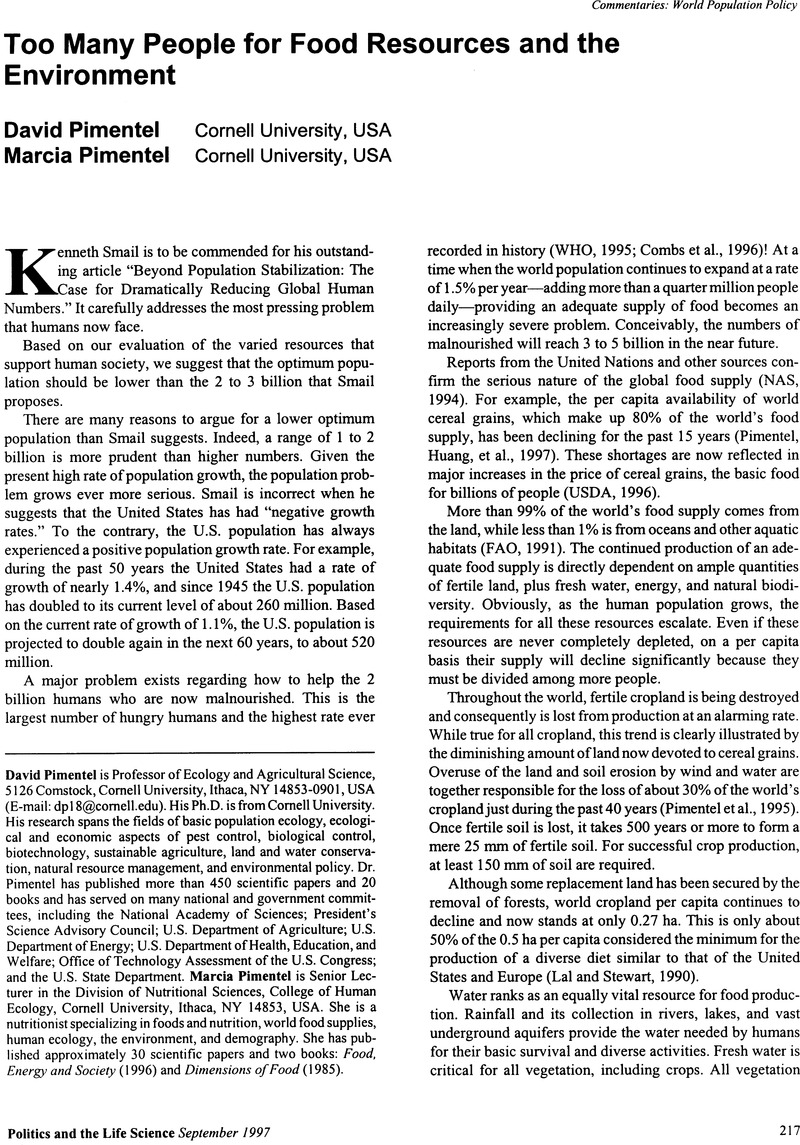Crossref Citations
This article has been cited by the following publications. This list is generated based on data provided by Crossref.
Smail, J. Kenneth
2003.
Remembering Malthus II: Establishing sustainable population optimums.
American Journal of Physical Anthropology,
Vol. 122,
Issue. 3,
p.
287.



